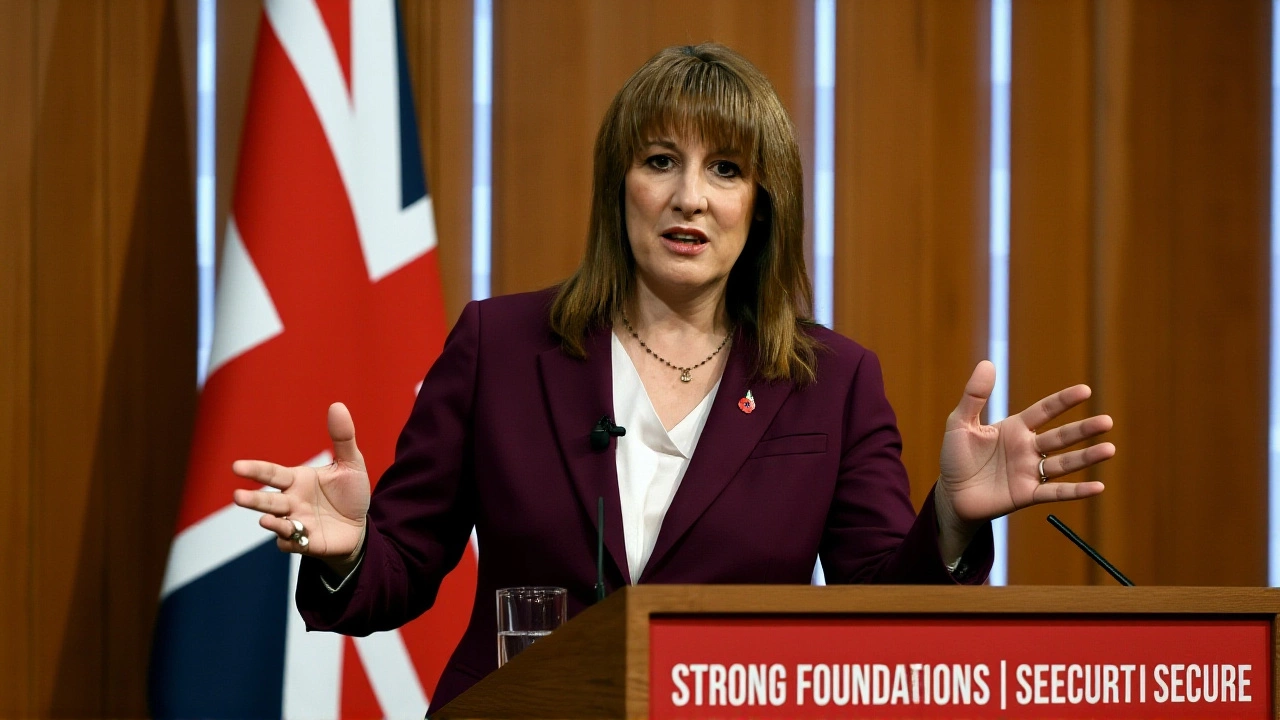Chancellor Rachel Reeves is moving forward with a £600 million property surcharge targeting roughly 300,000 homes in England’s highest council tax bands — F, G, and H — a move that could reshape housing markets in London and the South East. Announced on November 25, 2025, the plan is part of a broader £40 billion fiscal strategy aimed at closing the public finance gap, and it’s already sending ripples through the property sector. Unlike previous attempts to raise income tax, this surcharge targets wealth tied up in real estate, not wages — a strategic pivot after the Office for Budget Responsibility warned that a 2p income tax hike would fall short of its £6 billion revenue target. Now, the spotlight is on the bricks and mortar.
Who’s Really Paying?
The surcharge won’t hit every homeowner. It’s aimed squarely at the top 10% of properties by value — around 2.4 million homes — with the heaviest burden falling on those in bands F, G, and H. Band F properties, which currently pay an average of £3,293 in council tax annually, could see extra charges of several hundred pounds. For the rare G and H band homes — often valued at over £2 million — annual payments could jump by thousands. The UK Treasury plans to reassess these properties using updated valuations, a process not done since 1991. That’s right: we’re applying 34-year-old price tags to homes that have skyrocketed in value, especially in places like Westminster, Kensington and Chelsea, and Buckinghamshire.
Here’s the kicker: 59,000 homes in Westminster, 46,000 in Kensington and Chelsea, and over 65,000 in Buckinghamshire are in the crosshairs. That’s not just millionaires — it’s teachers, nurses, and small business owners who bought homes decades ago and never sold. Many never expected their properties to be worth £2 million. Now, they’re being treated like luxury estates.
The Geography of the Tax
The impact isn’t spread evenly. Twenty-six of England’s 296 local councils will see more than a quarter of their properties reassessed. In London alone, over 15% of homes fall into the targeted bands — a reflection of decades of underinvestment in housing supply and soaring demand. The Treasury is trying to avoid a blanket tax, but the lack of clear thresholds is causing confusion. Will it be based on market value? Land size? Proximity to central London? No one knows yet. That uncertainty is paralyzing the market.
Christian Lock-Necrews, a senior agent at Winkworth's Knightsbridge and Chelsea office, told GB News: "I have a client from the Middle East, who said that if this 100% increase does come in, it will likely be the lever to sell their property as it’s just one thing after the other at present." That sentiment is spreading. Buyers are holding off. Sellers are hesitating. Estate agents are bracing for a slowdown that could last years.

Why This Isn’t Just a "Mansion Tax"
Early reports called it a "mansion tax," but that’s misleading. The Independent noted the surcharge could affect as few as 100,000 homes, while The Telegraph warned the initial 150,000-home target could be just the start. This isn’t a one-off. It’s a precedent. If the government can revalue properties based on outdated data and slap on new charges without parliamentary debate, what’s next? A tax on second homes? A levy on inherited property? The door is open.
What’s also striking is how quickly the plan shifted from income tax to property tax. Reeves had floated raising income tax by 2p in the pound — a move that would’ve dragged 1.3 million more people into the 40% bracket, according to AOL. But the Office for Budget Responsibility shot it down. Property, it turned out, was the easier target. Less visible. Less politically explosive — at least for now.
What Happens Next?
The policy won’t take effect until after the next budget, expected in early 2026. But the Treasury is already drafting the legislation. Experts say the biggest risk isn’t the revenue — it’s the chaos. If the revaluation process is flawed, homeowners could be wrongly classified. A £1.8 million home in Guildford might be lumped in with a £2.5 million flat in Mayfair. Appeals will flood local councils. Legal challenges are inevitable.
Meanwhile, the housing market is already freezing. First-time buyers are watching from the sidelines. Retirees are reconsidering downsizing. And foreign investors — who’ve long seen London as a safe haven — are now asking: "Is this the end of the line?"

Background: The Council Tax That Never Updated
Council tax bands were set in 1991, based on property values from April of that year. Since then, inflation has erased their relevance. A house worth £60,000 in 1991 could be worth £800,000 today. Yet, the banding system hasn’t changed. That’s why the Treasury’s reassessment is long overdue — but also deeply flawed. Without a fair, transparent method to update values, this surcharge risks punishing the wrong people: not the ultra-rich, but the middle-class homeowners who never planned to become "luxury property owners."
The last serious attempt at a mansion tax — under Labour in 2012 — collapsed after warnings it would hit pensioners and rural homeowners. Reeves’ team insists this time is different. But without clear, data-driven thresholds, it’s hard to believe.
Frequently Asked Questions
How many homes are actually affected by the surcharge?
The Treasury estimates around 300,000 homes in council tax bands F, G, and H will face the new surcharge, with an additional 1.3 million in Band F potentially facing future reassessment. The £600 million target comes from targeting roughly 150,000 homes valued over £2 million, though final numbers depend on the revaluation process.
Why is this being done now instead of raising income tax?
The Office for Budget Responsibility advised that Rachel Reeves’ proposed 2p income tax rise would raise less than £6 billion — far below projections. Property taxation, despite its political risks, is seen as a more reliable source of revenue, especially since home values have surged since 1991 while income tax rates remain unchanged for most brackets.
Which areas will feel the biggest impact?
London boroughs like Westminster (59,000 homes), Kensington and Chelsea (46,000), and Buckinghamshire (65,000+) are the epicenters. These areas have the highest concentration of properties valued above £2 million, many of which were bought decades ago and have appreciated dramatically.
Could this lead to more taxes in the future?
Yes. The Telegraph and other analysts warn this could be the first step in a broader property tax regime. If the government successfully revalues 2.4 million homes, it may expand the surcharge to lower bands or introduce annual wealth levies on second homes, buy-to-let properties, or even inherited estates.
What’s the risk to the housing market?
Industry experts fear a multi-year freeze in sales activity. With unclear rules and potential for unfair assessments, buyers are pausing, sellers are withdrawing, and lenders are tightening criteria. The uncertainty alone could depress prices in affected areas — especially if foreign investors exit, as some already have.
Will this tax be fair to middle-class homeowners?
Many argue it won’t. A teacher who bought a home in Buckinghamshire in 1998 for £120,000 now owns a £1.9 million property — not because they’re wealthy, but because the area became desirable. Without exemptions for long-term residents or pensioners, this tax risks punishing those who never sought to become high-value property owners.
